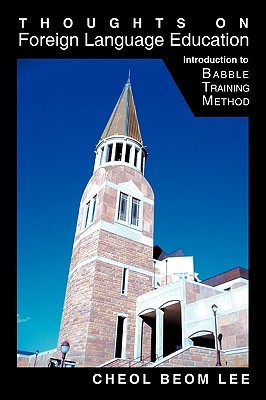
- We will send in 10–14 business days.
- Author: Cheol Beom Lee
- Publisher: AuthorHouse
- ISBN-10: 1438946201
- ISBN-13: 9781438946207
- Format: 15.2 x 22.9 x 1.6 cm, minkšti viršeliai
- Language: English
- SAVE -10% with code: EXTRA
Reviews
Description
One of the two theoretical models of BTM is a working hypothesis on language acquisition, which hypothesizes that there are three key factors of language acquisition ("acquisition factors") which needs to be acquired first for anyone to be able to obtain and command TL fluently. Such acquisition factors are the comprehensive linguistic intuition, the physical capacity, and the practical linguistic resources of TL. The other theoretical model of BTM is the working hypotheses on input & output. These hypotheses pose that, in the learning stage of a foreign language, there are certain relationships between the input and the output as follows: 1. There is no mutation between input and output; 2. No input produces no output; 3. There is individual linguistic resistance to be overcome for meaningful transition from input to output; 4. The input most practical, simple, necessary, and understood to the students produces the most effective output; 5. The proficiency level depends on the quality, quantity, and the practicality of the retained outputs; 6. There is a certain sequence and combination of input categories which is most effective for language acquisition and oral proficiency development.
EXTRA 10 % discount with code: EXTRA
The promotion ends in 21d.21:17:43
The discount code is valid when purchasing from 10 €. Discounts do not stack.
- Author: Cheol Beom Lee
- Publisher: AuthorHouse
- ISBN-10: 1438946201
- ISBN-13: 9781438946207
- Format: 15.2 x 22.9 x 1.6 cm, minkšti viršeliai
- Language: English English
One of the two theoretical models of BTM is a working hypothesis on language acquisition, which hypothesizes that there are three key factors of language acquisition ("acquisition factors") which needs to be acquired first for anyone to be able to obtain and command TL fluently. Such acquisition factors are the comprehensive linguistic intuition, the physical capacity, and the practical linguistic resources of TL. The other theoretical model of BTM is the working hypotheses on input & output. These hypotheses pose that, in the learning stage of a foreign language, there are certain relationships between the input and the output as follows: 1. There is no mutation between input and output; 2. No input produces no output; 3. There is individual linguistic resistance to be overcome for meaningful transition from input to output; 4. The input most practical, simple, necessary, and understood to the students produces the most effective output; 5. The proficiency level depends on the quality, quantity, and the practicality of the retained outputs; 6. There is a certain sequence and combination of input categories which is most effective for language acquisition and oral proficiency development.


Reviews